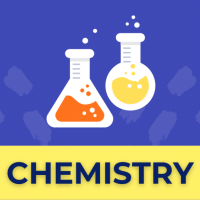Class 11 Exam > Class 11 Questions > Discuss the function and properties of muscle...
Start Learning for Free
Discuss the function and properties of muscles
Verified Answer
Discuss the function and properties of muscles Related: Short and Lon...
Muscles allow a person to move, speak, and chew. They control heartbeat, breathing, and digestion. Other seemingly unrelated functions, including temperature regulation and vision, also rely on the muscular system.
 This question is part of UPSC exam. View all Class 11 courses
This question is part of UPSC exam. View all Class 11 courses
Most Upvoted Answer
Discuss the function and properties of muscles Related: Short and Lon...
Function and Properties of Muscles
Muscles play a crucial role in the movement and functioning of the human body. They are responsible for generating force, maintaining posture, and producing heat. Muscles are composed of fibers that contract and relax to create movement. There are three main types of muscles: skeletal, smooth, and cardiac.
Skeletal muscles:
- Skeletal muscles are attached to bones and are responsible for voluntary movements.
- They enable us to perform activities such as walking, running, lifting, and throwing.
- Skeletal muscles are under conscious control and are stimulated by nerve impulses.
- They are striated in appearance due to the arrangement of actin and myosin filaments.
- Skeletal muscles work in pairs, with one muscle contracting while the other relaxes to create movement.
Smooth muscles:
- Smooth muscles are found in the walls of organs, blood vessels, and the respiratory system.
- They are responsible for involuntary movements such as digestion, blood flow regulation, and breathing.
- Smooth muscles lack striations and are controlled by the autonomic nervous system.
- They contract in a slow and sustained manner.
Cardiac muscles:
- Cardiac muscles are found only in the heart and are responsible for pumping blood.
- They are striated like skeletal muscles but are involuntary like smooth muscles.
- Cardiac muscles have a unique property called autorhythmicity, meaning they can generate their own electrical impulses to contract.
Properties of Muscles:
1. Excitability: Muscles can respond to stimuli, such as nerve impulses, to contract or relax.
2. Contractility: Muscles have the ability to shorten and generate force by sliding actin and myosin filaments.
3. Extensibility: Muscles can be stretched without damage and can return to their original length.
4. Elasticity: Muscles can recoil back to their original shape after being stretched.
5. Fatigue: Muscles can become tired and lose their ability to contract efficiently after prolonged use.
6. Hypertrophy: Muscles can increase in size and strength with regular exercise and resistance training.
7. Atrophy: Muscles can decrease in size and strength due to inactivity or lack of use.
In summary, muscles are essential for movement, maintaining posture, and generating heat. They come in different types, each with specific functions and properties. Understanding the function and properties of muscles is crucial for studying anatomy and physiology, as well as for physical education and sports performance.
Muscles play a crucial role in the movement and functioning of the human body. They are responsible for generating force, maintaining posture, and producing heat. Muscles are composed of fibers that contract and relax to create movement. There are three main types of muscles: skeletal, smooth, and cardiac.
Skeletal muscles:
- Skeletal muscles are attached to bones and are responsible for voluntary movements.
- They enable us to perform activities such as walking, running, lifting, and throwing.
- Skeletal muscles are under conscious control and are stimulated by nerve impulses.
- They are striated in appearance due to the arrangement of actin and myosin filaments.
- Skeletal muscles work in pairs, with one muscle contracting while the other relaxes to create movement.
Smooth muscles:
- Smooth muscles are found in the walls of organs, blood vessels, and the respiratory system.
- They are responsible for involuntary movements such as digestion, blood flow regulation, and breathing.
- Smooth muscles lack striations and are controlled by the autonomic nervous system.
- They contract in a slow and sustained manner.
Cardiac muscles:
- Cardiac muscles are found only in the heart and are responsible for pumping blood.
- They are striated like skeletal muscles but are involuntary like smooth muscles.
- Cardiac muscles have a unique property called autorhythmicity, meaning they can generate their own electrical impulses to contract.
Properties of Muscles:
1. Excitability: Muscles can respond to stimuli, such as nerve impulses, to contract or relax.
2. Contractility: Muscles have the ability to shorten and generate force by sliding actin and myosin filaments.
3. Extensibility: Muscles can be stretched without damage and can return to their original length.
4. Elasticity: Muscles can recoil back to their original shape after being stretched.
5. Fatigue: Muscles can become tired and lose their ability to contract efficiently after prolonged use.
6. Hypertrophy: Muscles can increase in size and strength with regular exercise and resistance training.
7. Atrophy: Muscles can decrease in size and strength due to inactivity or lack of use.
In summary, muscles are essential for movement, maintaining posture, and generating heat. They come in different types, each with specific functions and properties. Understanding the function and properties of muscles is crucial for studying anatomy and physiology, as well as for physical education and sports performance.

|
Explore Courses for Class 11 exam
|

|
Similar Class 11 Doubts
Question Description
Discuss the function and properties of muscles Related: Short and Long Questions with answers, Fundamentals of Anatomy and Physiology, Physical education for Class 11 2025 is part of Class 11 preparation. The Question and answers have been prepared according to the Class 11 exam syllabus. Information about Discuss the function and properties of muscles Related: Short and Long Questions with answers, Fundamentals of Anatomy and Physiology, Physical education covers all topics & solutions for Class 11 2025 Exam. Find important definitions, questions, meanings, examples, exercises and tests below for Discuss the function and properties of muscles Related: Short and Long Questions with answers, Fundamentals of Anatomy and Physiology, Physical education.
Discuss the function and properties of muscles Related: Short and Long Questions with answers, Fundamentals of Anatomy and Physiology, Physical education for Class 11 2025 is part of Class 11 preparation. The Question and answers have been prepared according to the Class 11 exam syllabus. Information about Discuss the function and properties of muscles Related: Short and Long Questions with answers, Fundamentals of Anatomy and Physiology, Physical education covers all topics & solutions for Class 11 2025 Exam. Find important definitions, questions, meanings, examples, exercises and tests below for Discuss the function and properties of muscles Related: Short and Long Questions with answers, Fundamentals of Anatomy and Physiology, Physical education.
Solutions for Discuss the function and properties of muscles Related: Short and Long Questions with answers, Fundamentals of Anatomy and Physiology, Physical education in English & in Hindi are available as part of our courses for Class 11.
Download more important topics, notes, lectures and mock test series for Class 11 Exam by signing up for free.
Here you can find the meaning of Discuss the function and properties of muscles Related: Short and Long Questions with answers, Fundamentals of Anatomy and Physiology, Physical education defined & explained in the simplest way possible. Besides giving the explanation of
Discuss the function and properties of muscles Related: Short and Long Questions with answers, Fundamentals of Anatomy and Physiology, Physical education, a detailed solution for Discuss the function and properties of muscles Related: Short and Long Questions with answers, Fundamentals of Anatomy and Physiology, Physical education has been provided alongside types of Discuss the function and properties of muscles Related: Short and Long Questions with answers, Fundamentals of Anatomy and Physiology, Physical education theory, EduRev gives you an
ample number of questions to practice Discuss the function and properties of muscles Related: Short and Long Questions with answers, Fundamentals of Anatomy and Physiology, Physical education tests, examples and also practice Class 11 tests.

|
Explore Courses for Class 11 exam
|

|
Signup to solve all Doubts
Signup to see your scores go up within 7 days! Learn & Practice with 1000+ FREE Notes, Videos & Tests.





















